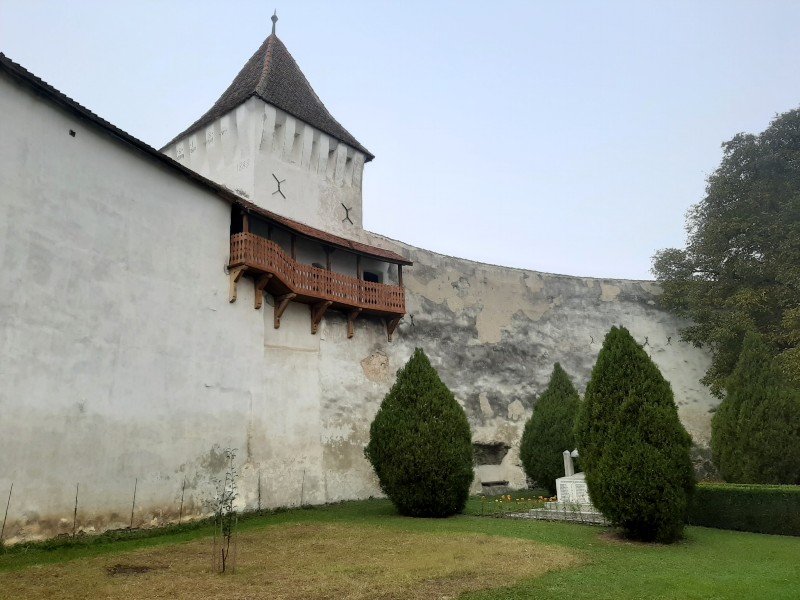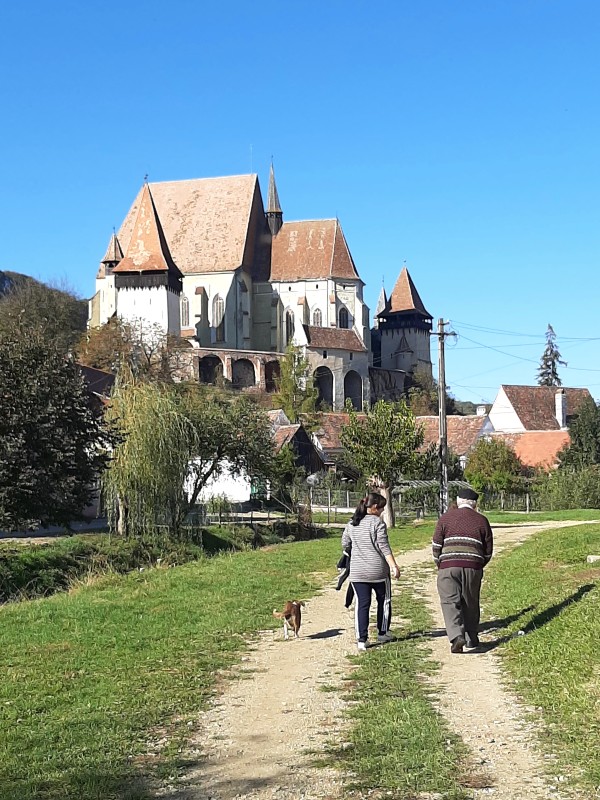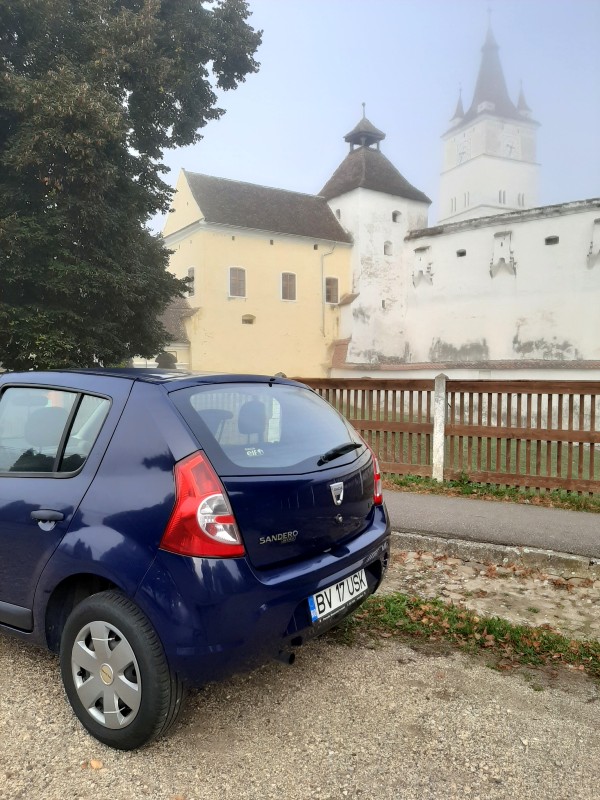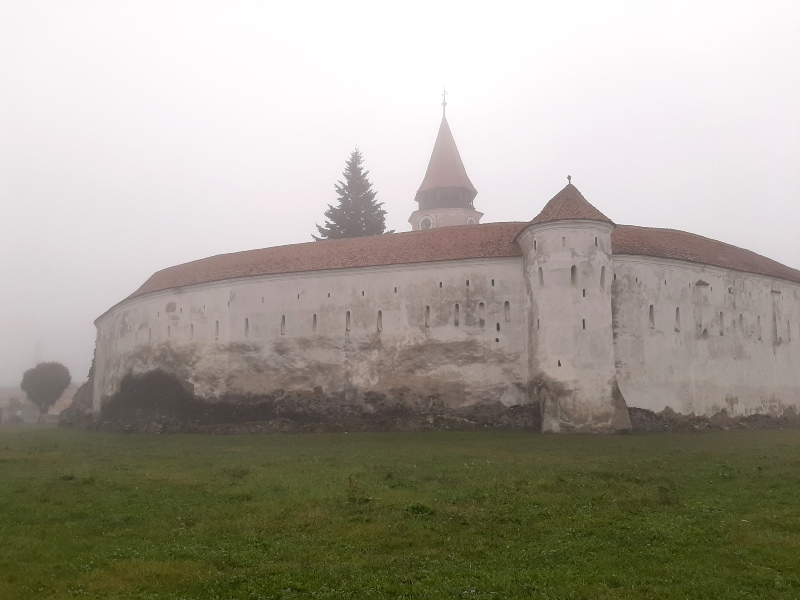Visiting the Saxon Fortified Churches of Transylvania
In this trip report, we will explore the traditional Saxon towns and villages in Transylvania (Romania) and visit their famous fortified churches.
Romania
There is a lot to see and do for tourists in Romania, as the country is dotted with magnificent cities and stunning natural landscapes.
Most of the charms of Romania can however be found in the countryside, and I would certainly say that this is where the heart of Romanian culture lies.
There is just something special about Romanian villages and small towns.
They have a traditional, old world charm which seems to have been long gone from Western European societies.
Here you may still see horse-drawn carriages cruising around the countryside, farmers baling hay with old-fashioned pitchforks, and local townsfolk all hanging out together in the shade of a tree to catch up on the latest gossips while drinking some homemade plum brandy.
Sure, there are also those who have tractors, big BMWs and the latest iPhone, but it is the contrast which makes the Romanian countryside so intoxicating.
It’s a place where the best of the new world comes together with the charms of the old world.

Fortified churches
Of all the stunning countryside sights of Romania, the Saxon fortified churches of Transylvania might perhaps take the top spot.
There are well over a hundred villages and towns throughout Transylvania with a Saxon fortified church.
Some of these churches are relatively well-known both nationally and internationally, while others are about as off the beaten path as you can get in Romania.
If you have the time, it is well-worth it to tour around the countryside and see as many as you can.
Not only are those churches interesting sights to visit, you will automatically traverse through some highly scenic areas and get a feel of Romanian village life.
And to understand Romania, you must have a look outside the cities as well.

German migration
German-speaking people only arrived in Romania in the 12th Century after they were invited by the Hungarian kings who ruled Transylvania back then.
These Germans were often well-educated people and excellent craftsmen, skills which the Transylvanian rulers needed to build fortifications against foreign invaders.
The newly arrived German immigrants were also tasked with mining and cultivating the lands.
The entrepreneurial mindset of these Transylvanian Saxons as they became to be known was also highly valuable in the development of trade and commerce.
Fun fact: Although these Germans are known as Transylvanian Saxons, they actually didn’t hail from Saxony but rather from the Rhineland, speaking a Franconian German dialect.

Fortified church
Since the Middle Ages, these Germans thus became an important part of everyday life in Transylvania.
In the cities such as Brasov and Sibiu they were mostly middle and upper class traders, craftsmen, educators and high-ranking officials, while in the countryside they founded their own thriving farming communities.
In the towns and villages which were too small (and lacking the finances) to be walled entirely, the Germans came up with an ingenious idea how to protect themselves: They turned their churches into miniature forts.
Around the church, a wall and other fortifications such as towers were built.
The church tower itself was constructed as high as possible to have a great vantage point over the surrounding area.
These churches were never meant to withstand a siege by a properly equipped army, but were constructed mostly as a place to shelter for the local community in case they were attacked by brigands or a smaller group of enemy soldiers.
Inside these compounds, there was plenty of space to store enough provisions to defend the church for a couple of weeks until a relief force could arrive to rout the attackers.

The Saxon communities nowadays
Unfortunately, there aren’t actually many German-speakers left in most Saxon Transylvanian towns.
Many ethnic Germans were killed in World War II or fled alongside the retreating Nazi forces when the Soviet Army swept through Romania.
Although the newly communist Romanian state did not conduct a mass expulsion of ethnic German citizens as some neighbouring countries like the Soviet Union did, most Transylvanian Germans did face economic hardship under the new communist rulers, just like most of their ethnic Romanian compatriots.
When after the fall of communism in 1989 the Transylvanian Saxons could finally get a passport (in the Ceaușescu era this was only possible for party loyalists) they emigrated in droves.
As they could easily get German citizenship under a special law of return, many in the Saxon community opted for better living standards in Germany.
That said, in the main cities and in some villages originally founded by the Transylvanian Saxons, a small but proud ethnic-German community still remains as some people just were not able to give up the houses and lands they inhabited for centuries.

UNESCO World Heritage
Some of the fortified churches have been declared UNESCO World Heritage sites.
These are the churches in Biertan, Câlnic, Dârjiu, Prejmer, Saschiz, Valea Viilor and Viscri.
Although some of these churches are among the best you can see, they are by no means the only beautiful fortified churches in existance.
The list of fortified churches in endless – besides the more than 120 Saxon fortified churches there are also 23 Székely (ethnic Hungarian) fortified churches to explore in Transylvania.

Visiting the churches
The most visited of the Transylvanian fortified churches (such as Biertan, Viscri and Prejmer) are open every day of the week and will charge a minor entrance fee of around 10 lei (~2 euro).
However, the great majority of the fortified churches have their doors normally shut as there just aren’t enough visitors stopping by daily to keep them open around the clock.
In case you end up at a fortified church which is closed, there is always a note posted on the door or a nearby announcement board with the telephone number of the keyholder.
Just give the caretaker of the church a ring, and he or she will most likely come within a couple of minutes to open the door for you.
Chances are that the keyholder does not speak English or German, so writing down a Romanian sentence or two in advance does certainly help in case you do not speak the local language.
Use Google Translate or perhaps ask a hotel or restaurant employee to help you with this before you set off.
In case no entrance fee is charged, you should definitely leave behind some money in the church collection box as these village churches can certainly use all the support for renovations and upkeep.

Car or public transport
Although some Saxon fortified churches can be visited by using public transport, not all of these Transylvanian towns and village have great transport links.
Many have no public transport links at all, and those which have them might only see one or two buses a day, making it difficult to plan an itinerary.
Because of this, it is highly advisable to have a (rental) car as not only does it make it so much easier to explore these amazing Saxon fortified churches, but also the surrounding countryside.
With a car, you can easily combine these historic churches with other interesting sights and some of the gorgeous nature in the area and get the most out of your day.
Arranging your trip
If you need a rental car, I can highly recommend the services of Auto Rent Brasov in Brașov, Rodna Rent a Car in Cluj-Napoca and Prima Rent in Bucharest as local companies.
I’ve rented cars with these companies multiple times and was always satisfied with their service.
Of course, most international rental agencies such as Hertz and Sixt also have offices in most of Romania’s biggest cities and airports.
For trains in Romania check national railway company CFR Călători, although some rural lines in the country are operated by one of the smaller private companies.
Bus timetables can be checked at Autogari.ro (and sometimes booked as well) – although it does not always list local bus lines.
Either base yourself in one of the great Transylvanian cities such as Sibiu or Brașov and make a day trip to visit some of the Saxon fortified churches, or make a small road trip and actually stay in one of these small towns and villages for the night before moving on.
Some of the Saxon towns such as Viscri and Saschiz have quality homestays and bed & breakfast (B&B) as accommodation options.

Travel across Romania
As I’m writing this, I have visited around 20 of the ~150 fortified churches in Transylvania.
This trip report will therefore be continuously updated as I try to visit all the fortified churches in Romania, one at a time.
In the individual chapters of this trip report, I will not only try to give some background information about every Saxon fortified church and town, but will also explain whether or not you can reach it with public transport.
If there are any other sights of interest in the immediate surroundings of the Saxon fortified churches and towns, I will of course cover these as well in this trip report!

Trip report index
This trip report consists of the following chapters:
1. The Fortified Church of Harman (Honigberg), Brasov County
2. The Fortified Church of Prejmer (Tartlau), Brasov County
3. The Fortified Church of Feldioara (Marienburg), Brasov County
4. A Visit to Rupea Fortress
5. The Fortified Church of Homorod (Hamruden), Brasov County
6. Racoș: Exploring an Extinct Volcano and Abandoned Castle
7. In the Footsteps of King Charles: A Visit to Viscri, Romania
8. A Visit to the Fortified Church of Viscri, Brasov County
9. A Night Walk Around the Citadel and Old Town of Sighisoara
10. Review: Hotel Casa Wagner, Sighisoara, Romania
11. The Fortified Church of Saschiz (Keisd), Mureș County
12. The Fortified Church of Cloasterf (Klosdorf), Mureș County
13. The Fortified Church of Mesendorf (Meschendorf), Brasov County
14. The Fortified Church of Crit (Deutsch-Kreuz), Brasov County
15. The Fortified Church of Biertan (Birthälm), Sibiu County
16. The Fortified Church of Hosman (Holzmengen), Sibiu County
17. Review: Brukenthal Palace Hotel, Avrig
18. A Visit to Sambata de Sus and the Brancoveanu Monastery
19. Into the Carpathians: A Beautiful Drive to Moieciu de Sus

